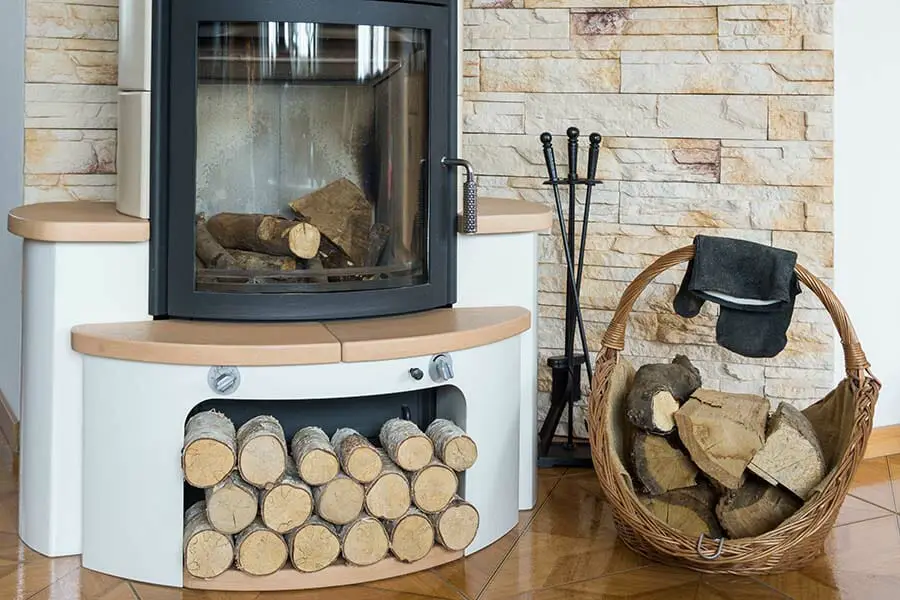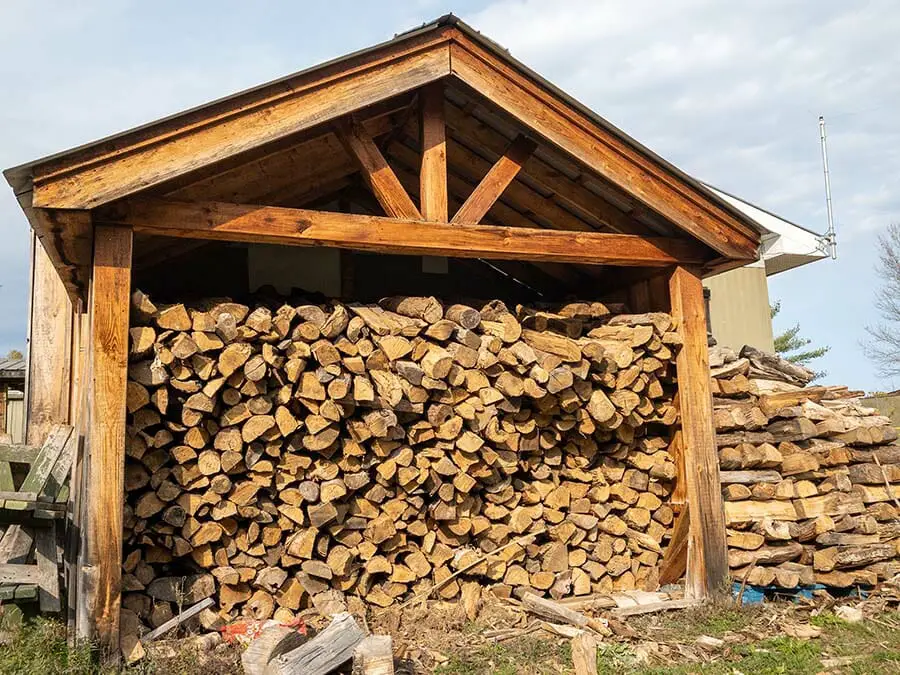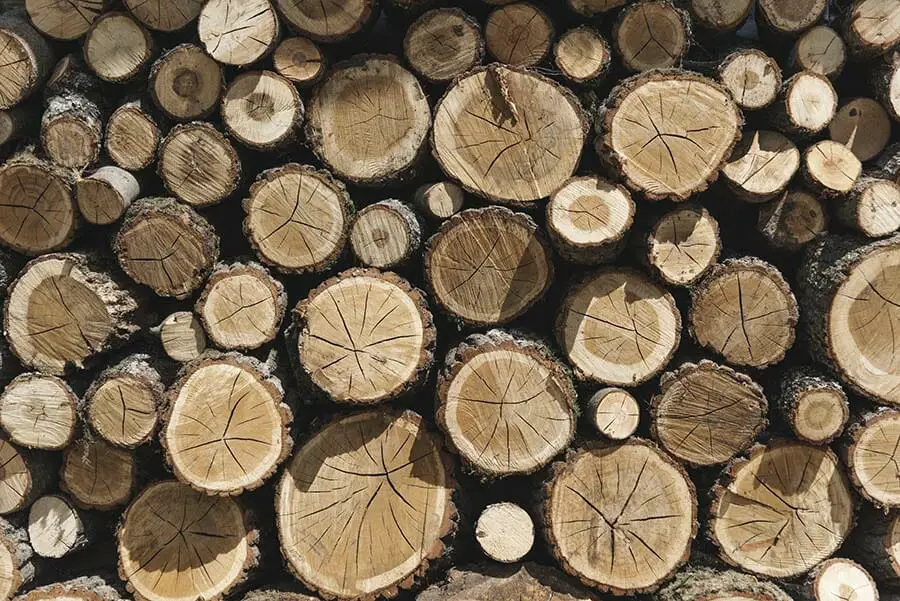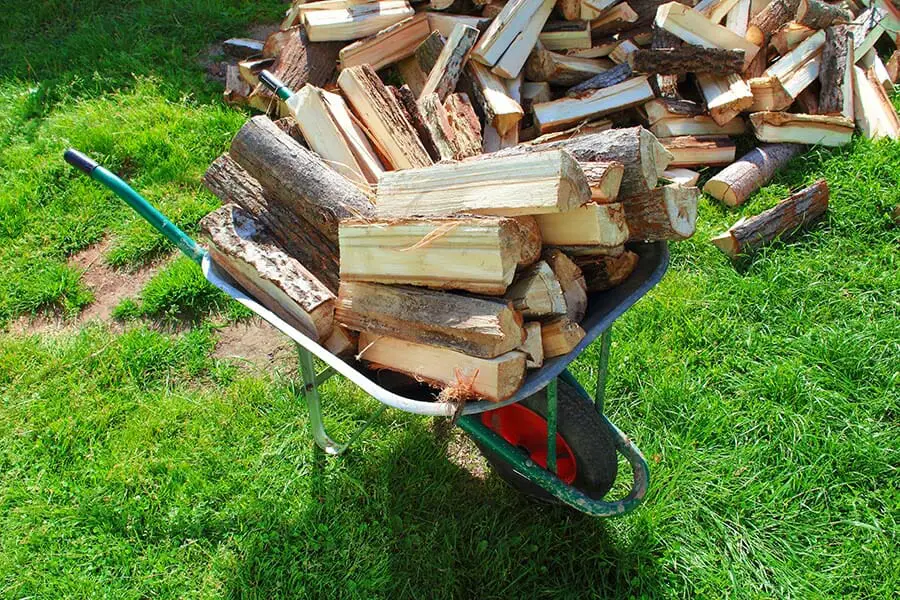- Firewood goes ‘bad’ when it gets rotted or has too much moisture
- When it’s too moist, it won’t burn efficiently- it can be hard to light up, will produce more smoke, and also release less heat- it’ll also pop and crackle alot
- Rotten firewood generally isn’t recommended for use- a little rot isn’t terrible, but fully rotted firewood can be unhealthy and mess up your chimney
- If it’s left in optimal conditions, such as keeping it off the ground or protected from rain, firewood will not go bad
- It’s best to go for seasoned firewood or kiln-dried firewood with low moisture content (get a moisture meter if you want to measure your firewood)
- Air-dried (also known as seasoned) wood is usually around 30 percent moisture content. Kiln-dried firewood, on the other hand, generally will contain less than 20 percent moisture
- Freshly cut ‘green’ wood will commonly have a pretty high moisture content, far exceeding the recommended 20% you see with kiln-dried wood
Contents
Can Firewood Go Bad?
Have you been noticing that your seasoned firewood hasn’t been burning all that great? Is it not catching on fire as well, or is it not burning at all? Your firewood may have gone bad. It is a true fact that yes, firewood can indeed go bad.
If you noticed that your wood looks a little strange, or is starting to break apart easily you may have bad firewood. Bad firewood will not burn as it should. Firewood becomes bad when it begins to rot. Wood rots when it is exposed to moisture.
Firewood that sits in a pile for a couple of years outside will begin to rot. It will not stay good after the second year. The reason why is because it becomes wet from elements such as rain and snow. Firewood must be kept dry and out of the weather in order to stay good.
Can You Burn Rotten Firewood?
It’s possible, but not recommended.
Rotten wood is less dense than solid wood . This means it won’t generate as much heat. However, it can also produce creosote or gum up your chimney, because it is usually wet.
It’s not only bad for your health, but also because you won’t be able to smell firewood that is rotten.
While a little bit of rot isn’t a problem, a completely rotten log is.
How To Prevent Your Firewood From Going Bad

Is there a way that you can prevent your firewood from going bad? Yes! There absolutely is. You can prevent your firewood from going bad by storing it in a dryer place. The best idea is to have a woodshed.
Stack all of your firewood neatly in the woodshed to keep it fully accessible and out of the elements. Rain and snow will ruin firewood. Wood must be kept dry to be kept good. Wet wood will not burn. When wood becomes wet and does not dry and stay dry it will rot.
If you notice that some of your firewood is crumbling and looking odd it is probably because it is rotting. It will no longer burn. It should not be put in your woodstove.
If this has happened to your firewood the reason why is the place where you are keeping it stored. Move the location of your firewood to a dryer place to prevent it from becoming wet and rotting.
Invest In A Woodshed To Keep Your Firewood Dry

The best place that you can store your firewood is inside. If you have a small shed consider turning it into a woodshed.
If you do not have shed consider purchasing one to store your firewood in. They are not that expensive and will last for years.
The amount of wood you will save makes it definitely worth investing in. If you simply can’t afford to buy a woodshed and do not have one, no worries. You can still keep your firewood nice and dry by stacking it on your porch. Stack the wood in neat rows.
It will be easily accessible and when stacked in rows will not take up that much space. If your firewood absolutely must be kept outside due to no shed or porch to store it on you can still protect it to keep it good.
You can use a tarp to cover any wood that is stored outside. It is a good idea to try to stack it on pallets so that the bottom row of wood is not directly on the ground.
This will keep that bottom row from getting wet and rotting and will keep the snow and rain off of your wood. Wood that is kept dry will last for years. Wood that gets wet will not.
What Do I Do With Bad Firewood?

What do you do with firewood that you have determined to be bad? If you have discovered that some of your firewood has become bad it is best to get rid of it. Check your woodpile or stack carefully for more bad firewood.
Remove all of the bad wood from the pile or stack. Get it away from the good firewood so it does not get mixed back in. Bad firewood should not be put into your wood-burning stove. It will not burn properly and will not produce heat as it should.
It is best to just get rid of it. Maybe a neighbor or a friend could turn it into mulch for you. It is a great idea to recycle bad firewood into mulch for your gardens or for around the bases of trees.
It ensures that the wood doesn’t get wasted totally and if you have a wood chipper the project is completely free. All you have to do is chip up the old bad firewood and spread it.
How Do You Obtain Firewood For Burning In Wood Burning Stoves?
If you have a wood-burning stove this article is for you. Wood burning stoves require firewood to burn. That is how they produce such amazing hot heat. It is fairly easy to obtain firewood for your wood-burning stove.
If you are lucky enough to own land with woods you can go out and cut your own. There is nothing more wonderful than spending a day out in the woods cutting wood. If you cannot cut wood off of your land yourself you can hire someone to do it for you.
Wood can also be easily purchased from locals. Many people with land cut wood not only to use for their own wood-burning stoves but also to sell. Wood is one of the most affordable ways to heat your home.
It is quite inexpensive when compared to other heating fuels such as kerosene, fuel oil, propane, or coal.
Wood Burning Stoves Provide the Best Heat
Wood-burning stoves provide the best heat compared to other types of heating sources. Furnaces, space heaters, etc. provide half the heat a wood-burning stove does at double the cost. Firewood can be either hardwood or softwood.
When firewood is first cut it is considered to be wet, or green. Wet wood must be dried before it can be burned.
Seasoned, or dried wood burns the best. It provides a steady flame and causes less creosote than wet wood which has a hard time burning at all and causes a lot of creosote.
In Summary

The type of wood you use for your fireplace can have a big impact on the quality of your fire.
There are many different types of wood that can be used for a fireplace, but not all are suitable. Some woods will produce more smoke than others, and some will produce more heat.
Some woods are better suited to indoor fires because they produce less smoke and smell better.
Taking care of firewood is a very important task for any household. It is not only about the aesthetics, but also about the safety of your home.
The first thing you need to do is to make sure that you have enough firewood for the winter and use a log holder! You should also make sure that it is dry and well-seasoned. If you are not sure how to season it, there are many tutorials on YouTube that can help you out with this task.
You should also make sure that your fireplace or stove has a good draft and that there are no cracks in the chimney or flue pipe. This will ensure that your house stays warm during winter and doesn’t catch on fire because of an unattended fire in the fireplace or stove.
